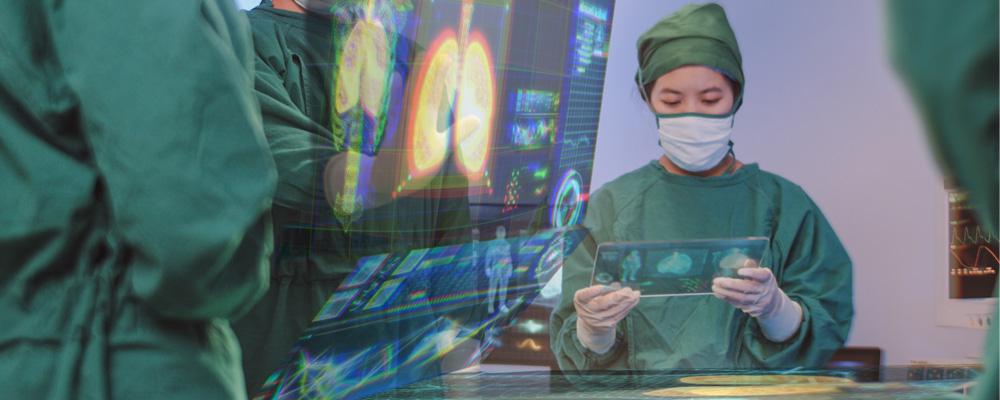
VR-based Training Provides New Learning Opportunities for Surgeons
One of the more innovative uses of Virtual Reality (VR) technology is for training. This tech seems tailor-made to help ensure workers have the necessary skills to perform their jobs or properly use equipment.
The medical field, perhaps more than any other industry, is particularly concerned with ensuring practitioners are capable of performing their tasks with as few errors as possible. To that end, surgeons have to undergo hundreds of hours of training over years of time. But even with that extensive amount of training, a 2017 study revealed that up to 30% of graduating surgical residents still lacked the skills necessary to operate without supervision.
Clearly, additional training and new approaches to that training are in order. VR-based simulators can provide a safe and effective way for surgeons to hone their skills without the need to be in an actual surgical situation. According to Dr. Rondi Kauffman of Vanderbilt University Medical Center, having a VR platform is “incredibly powerful in improving skill acquisition by being able to practice fundamental techniques in a safe setting."
Advantages of VR
Unlike with traditional surgical training, VR simulators have the advantage of being totally separate from the real world – which means they can present trainees with consistent scenarios, as well as provide an objective assessment of the inexperienced surgeons’ skills. This is great news since, as an orthopedic surgery resident at UCLA noted in The Harvard Business Review, assessing skills is often a weak point in surgical residency programs. The consistency provided by VR simulators can help address this weakness.
Surgeons can also use VR to gain experience with new types of equipment. With new medical devices being released at a faster pace than ever before, it is critical that surgeons have the opportunity to stay current with technology, and to practice skills related to new medtech without negatively impacting patients. VR simulators can help bridge that gap in surgical training.
VR Gaining Momentum in Medical
More than a decade ago, VR started to become viable and has since been embraced by a number of industries, from manufacturing to agriculture. For instance, John Deere has used its own VR system for many years to help farmers achieve more efficient and sustainable results, and improve operations at company facilities. (John Deere showed off its VR system at the 2021 Consumer Electronics Show.) But the medical industry has been slow to embrace new technologies, which is understandable given the stakes.
Now, the tide is turning. A growing number of recent studies indicate that VR is a highly effective training tool for medical professionals. For instance, one 2020 National Institutes of Health study showed a significant improvement in skills when evaluating students who used VR compared to traditional learning techniques. The study concluded that for surgical resident physicians with limited training opportunities outside of the operating room, VR is a “relatively inexpensive and time-efficient active training method for developing surgical skills.”
Speaking of “relatively inexpensive”... cost has been one obstacle to adoption of technology for medical training. Traditional medical simulators are expensive! Fortunately, there are a number of tech companies like Unity that now offer software toolkits that make it much more affordable to develop medical training simulators. Plus, inexpensive hardware like the Oculus Rift allows developers to build robust VR systems without spending tens of thousands of dollars to even stand up a prototype.
As VR technology continues to evolve and costs continue to decrease, VR will likely see widespread adoption in the medical realm, particularly for surgical training. The results – hopefully – will become apparent in terms of improved patient outcomes.
For more on VR and a look at the reality-virtuality continuum, read From Manufacturing to Medical, Mixed Reality is Improving Complex Interactions.